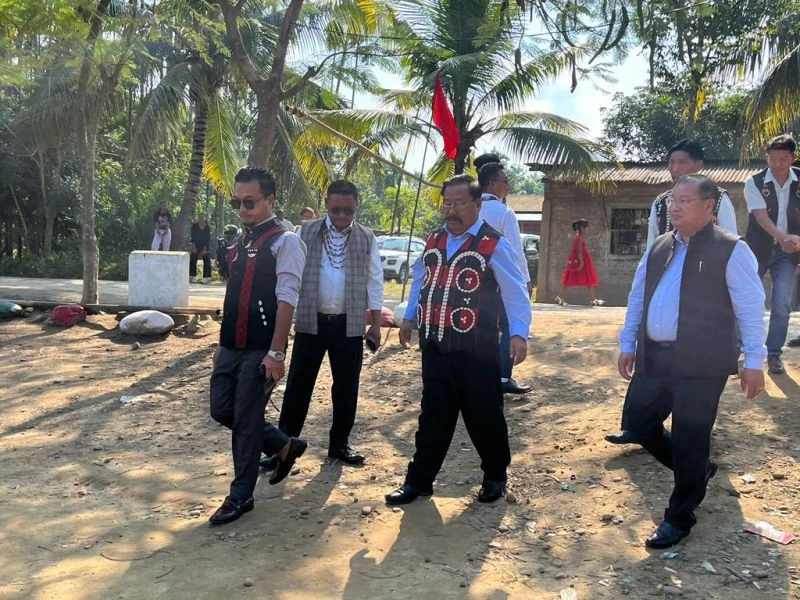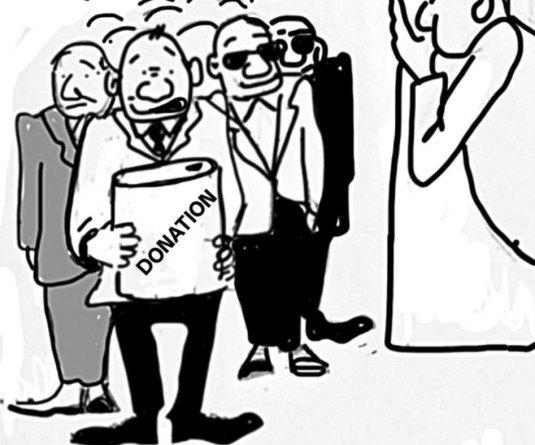Youths of Ekranipathar village performing the Wangala dance during the second day of the Wangala mini Hornbill festival on November 22. (Morung Photo).

Morung Express News
Dimapur | November 22
When Christianity arrived in the Naga Hills, there was a significant loss of rich cultural identity. However, people today have reinitiated the search for that lost heritage, viewed Dr Tinojongshi Chang, Deputy Commissioner (DC) of Dimapur, adding “Maybe Christianity is not to be blamed as it could be due to our own misunderstanding.”

The DC made the comments, while speaking as the special guest during the second day of the Wangala mini Hornbill festival held at Ekranipathar village, Dimapur on November 22.
Organised by the Nagaland Garo Tribal Council (NGTC) and the State Department of Tourism, the festival is regarded as the most significant post-harvest festival of the Garos generally held in the most of October to November.

Chang went on to state that as a tribal people, “the identity of the Naga people lies in our rich cultural heritage.” Due to which the State Government has also made significant efforts to promote it through the mini Hornbill festivals in the districts and the main Hornbill festival at Kisama.
At the same time, the DC stressed that more efforts was required to preserve one’s culture and heritage and pass it on to the next generation. For which proper documentation of all customs and practices was needed. “This is the only identity we have,” he underscored.
.webp)
Being the DC of Dimapur, he noted that the district was similar to a mini state made up of a diverse range of communities and groups all living together. This provides the perfect platform where the Naga people and all the other recognised tribes can come together and lead the way towards fostering unity, he observed.
R Tsapikiu Sangtam, President of Eastern Nagaland People’s Organisation (ENPO) who was the tribal special guest thanked the organisers for inviting a member of Eastern Nagaland to their festival. “During post harvest celebrations it is a time of thanking the Lord for the blessings bestowed during the year and this is what Wangala is all about,” he stated.
.webp)
Although considered a minor tribe, he emphasised that their presence was profound as an indigenous inhabitant of Nagaland. “You are all equally important citizens of Nagaland,” he said.
The second day saw a variety of cultural items performed by the youths of Ekranipathar village (Wangala dance), Samaguri village (Rugala ritual) and indigenous games display.
At present according to the NGTC, there are five recognised Garo villages in Nagaland namely, Darogapathar, Dubagaon, Ekranipathar, Samaguri and Eralibill. The oldest village in existence, Darogapthar had been established in 1811 which was prior to the arrival of the British administration in the Naga Hills.





